Herbs are an essential element for any kitchen gardener. They’re simple to grow in borders, window boxes or decorative containers. As well as bringing charm and fragrance to your garden, they’re useful in the kitchen, and attract wildlife to your garden.
There’s a wealth of choice for anyone considering a herb garden. Lavender is famed for its aromatic and therapeutic qualities, and culinary herbs like basil and chives can add to a huge range of dishes. Shrubby herbs like rosemary and thyme have multiple uses, and also add to the structure and character of your garden.
Here’s our guide to how to choose the right herbs to grow, how to look after them, and how to harvest and preserve your herbal crops.
Pick the right herbs to grow
Did you know you can grow many different varieties of herbs in one pot if they share the same sun, water, and soil preferences? Simply choose to grow from herb seed or get a head start with herb plants.
| Annual & Biennial Herbs | Perennial Herbs |
| Basil | Oregano |
| Coriander | Mint |
| Parsley | Thyme |
| Dill | Sage |
| Chervil | Rosemary |
| Chamomile | Chives |
| Savory | Fennel |
| Borage | Horseradish |
| Lemon Grass | Comfrey |
| Lovage | Hyssop |
| Rocket | Tarragon |
Eight popular kitchen herbs
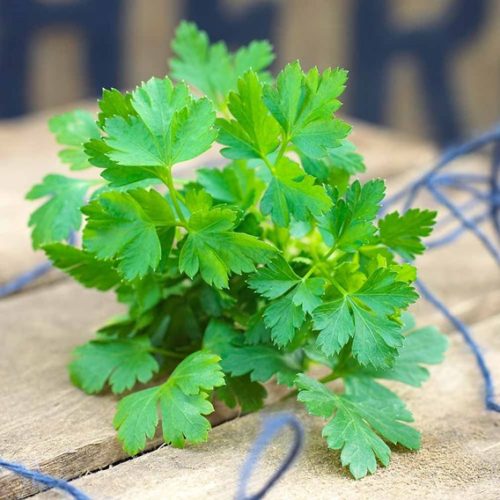
Parsley – One of the most popular herbs to use in the kitchen, parsley can be ready just 12 weeks from sowing, and can be grown & harvested successfully throughout winter. Ideal for salads or garnishes.
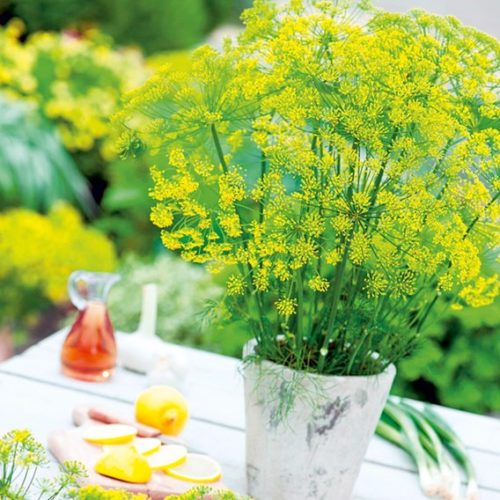
Dill – Sow this strongly flavoured herb outdoors in May, and enjoy freshly harvested dill throughout the summer! A hardy annual, dill looks great in a kitchen garden or in a vegetable border. Ideal for soups, sauces & stews.
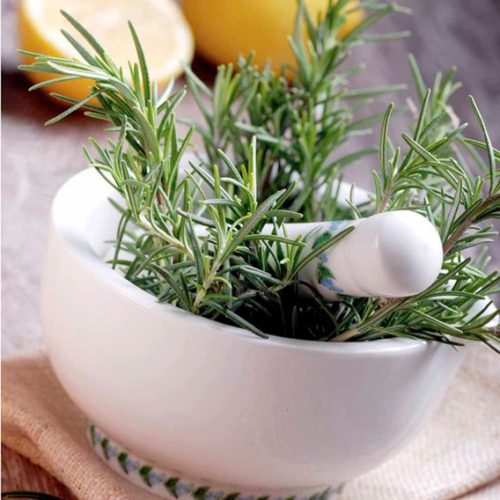
Rosemary – Rosemary is a fragrant, hardy perennial herb that can be used year round in the kitchen. Plant both annual & tender varieties outdoors in May and enjoy freshly harvested rosemary throughout autumn & winter. Ideal for flavouring stews, meat, and fish dishes.
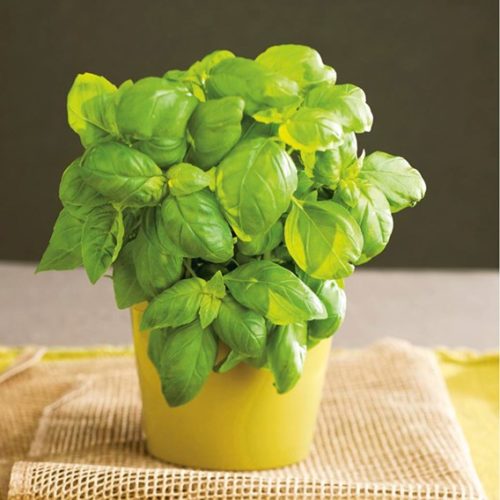
Basil – A popular herb that thrives in dry, warm spots, sow & grow basil in containers on your windowsill for ease of use in cooking. Harvest throughout summer to autumn. Ideal for using in pasta dishes, pizzas, and Thai cooking.
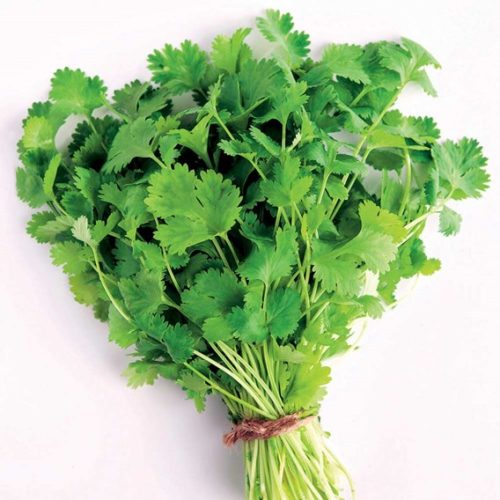
Coriander – An easy to grow herb, coriander can be successfully started from seeds sowed directly into pots. Ideal for using in confectionery, poultry stuffing, or pickles. Fancy a coriander variety with a little bit of kick? Try lemon coriander – perfect for salads & stir-fries.
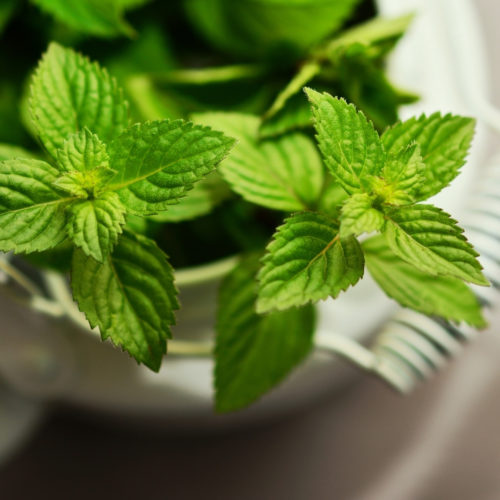
Mint – As one of the best herbs for attracting pollinators to your garden, grow mint in pots or containers rather than sowing directly into the ground. Harvest from July-October. Ideal for using to subtly enhance veg such as peas, potatoes and carrots, or in jellies & sauces.
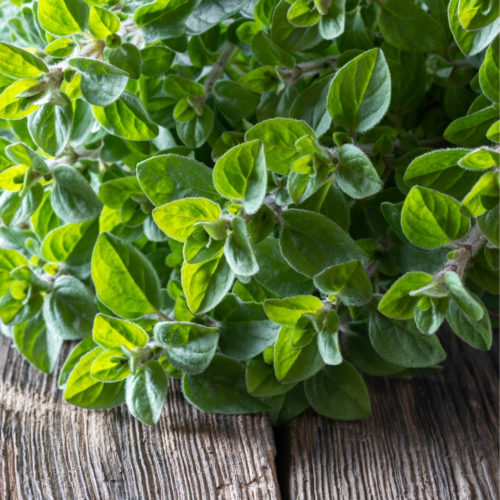
Oregano – An attractive bushy plant, oregano can be used not only in the kitchen, but also as a statement piece in your garden. With Mediterranean origins, sow oregano in full sun with good drainage. Ideal for flavouring meat dishes, omelettes, or pizza.
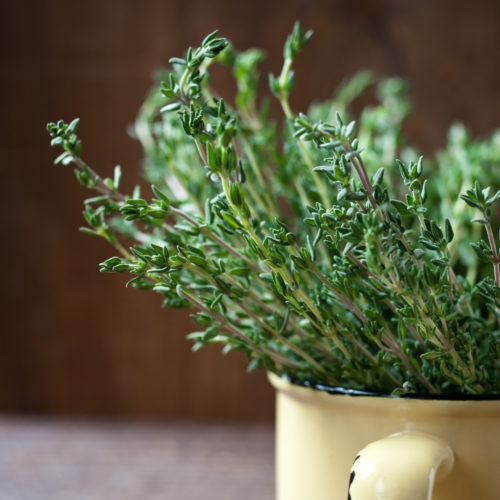
Thyme – This kitchen garden essential, thyme can be grown successfully outdoors in pots, or in windowsill containers. Can be harvested between March-November. Ideal for seasoning dishes, or use in stews and casserole dishes.
How to grow herbs from seed
You can sow most herbs in February and March in a heated greenhouse, and many annual and perennial herbs outdoors from April to June. Move indoor planted herbs outdoors once the danger of frost has passed, either into pots or directly into your garden.
However, watch out for mint – it’s an invasive plant, and if you put it in your border, make sure it’s in a large pot or bucket with the bottom removed so that the root spread is restricted. Mint is wonderful, but it will take over, given the opportunity.
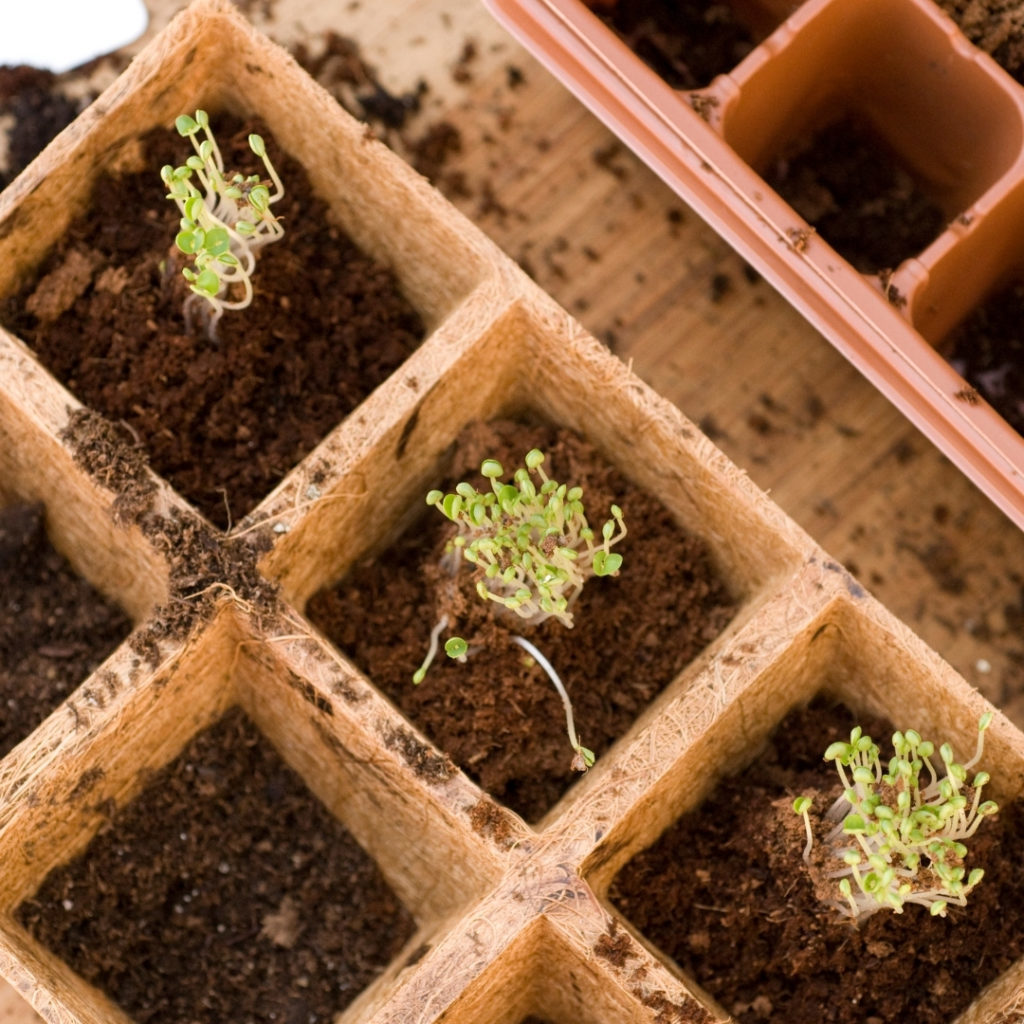
- Germinate: For the best results, germinate most herbs at the beginning of spring in a seed tray and place in a heated propagator.
- Soil Preparation: Generally, sow herb seeds in peat-free compost, mix with some silver sand for sharp drainage, a covering of vermiculite on the surface may aid even germination. Be sure to label your seeds using plastic or wooden labels. Herb seeds can vary so always check the seed packet for growing instructions.
- Pricking Out: Once your seeds have germinated, and your seedlings have produced their first two leaves, prick out, gently holding them by the leaves and levering them out with a dibber.
- Potting On: Pot them into individual pots or cell trays
- Going Outside: Gradually acclimatise your new herb plants by hardening them outside during the day. A cold frame is a perfect place to raise your herb plants as it can be opened during the day and closed at night.
Herb Compost Requirements
When potting herbs on, it is fundamental that the compost is free draining, as many herbs come from dry, arid environments. Mix peat-free compost with horticultural gravel, as a gravel mulch on the surface will aid the herb plants to progress. Feed your herb plants as they start to grow with a good tonic like seaweed extract . Mix your herbs among veggies and flowers in a cottage garden style, as this varied planting is an incredibly effective growing technique. To keep herbs healthy, clip new growth regularly.
Choose the right pots & containers to grow herbs in
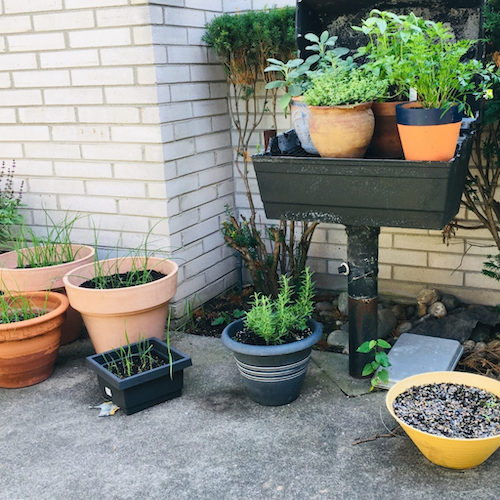
Herbs thrive in containers – and the beauty of this is you have a wealth of choice. Choose something decorative, architectural or eco-friendly.
However, the main consideration is to purchase a pot with adequate drainage. Most pots come with drainage holes, but you can always drill these into plastic or wooden pots if they don’t come with any.
For individual herbs, you can simply use small pots – just make sure you add labels so you know what you’re growing!
How to care for herbs
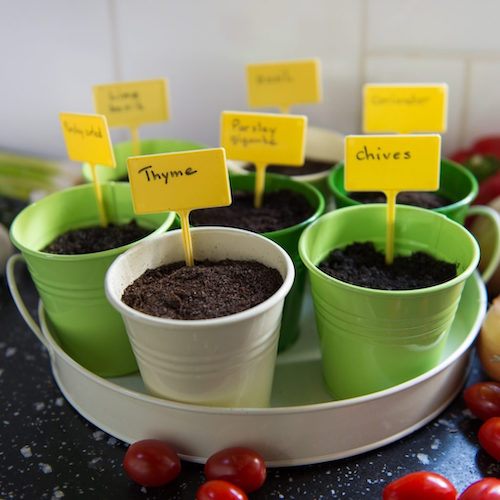
- Water & Feeding: Herbs are low maintenance so they don’t have a busy or overpowering care regime. If you grow them in containers they will need regular watering and feeding.
- Trimming: Trim herbs back in spring to allow new healthy leaves to come through. Also, deadhead the herbs when they are beginning to fade.
- Winter Months: In colder autumn and winter months the dead foliage actually helps protect the plant. However, fallen leaves should be removed from low-growing herbs like thyme and lavender to prevent fungal diseases. It isn’t necessary to mulch your herbs, with the exception of mint which prefers moist growing conditions.
How to harvest herbs
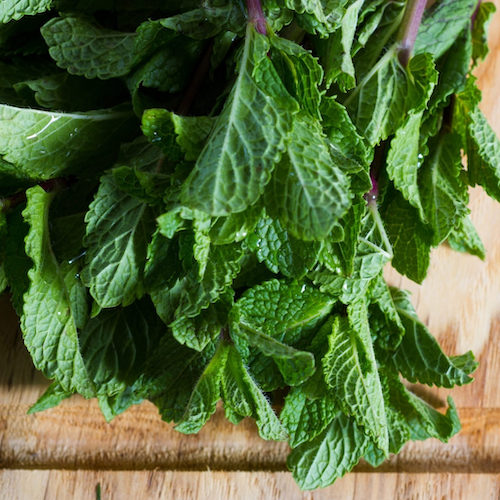
When to pick fresh herbs
Harvesting your herbs is the best bit and you get to start enjoying them in the kitchen! Do remember that herbs should be harvested when the oils responsible for flavour and aroma are at their peak. Begin harvesting the herb when the plant has enough foliage to maintain growth. Try not to pick more than a third so the plant becomes too bare and gives the plant time to recover. Harvest early in the morning, after the dew dries, but before the heat of the day.
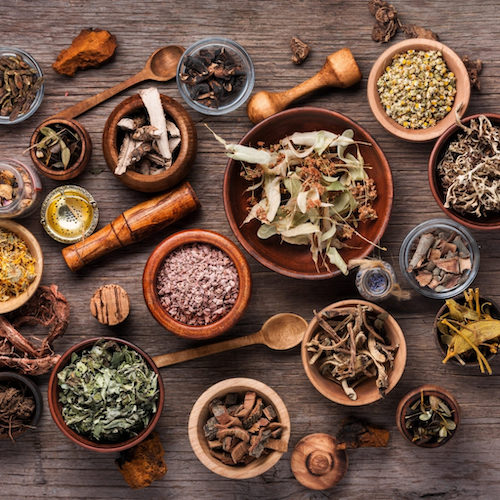
Drying herbs
To dry the leaves hang bunches of about ten stems upside down in a warm dark place.
Once dried remove the leaves and store them in an air-tight container.
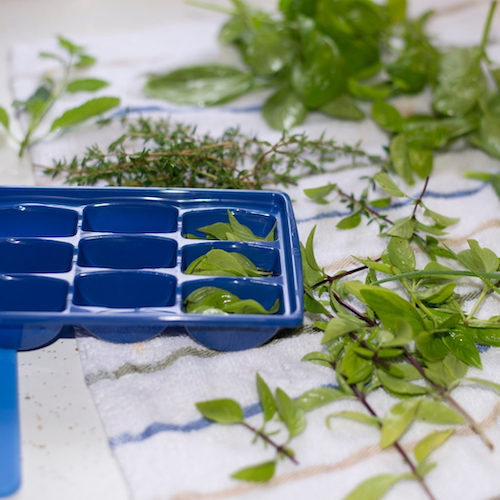
How to freeze herbs
Freezing herbs is one of the easiest ways to enjoy your plants for much longer! Freezing is great for fast-growing herbs like coriander and parsley. You can freeze whole springs or chopped herbs. Place generous pinches of herbs in water-filled ice cube trays and freeze or spread the herbs loosely onto a sheet to freeze, then relocate the herbs into a large plastic bag and seal.
Overwintering Herbs
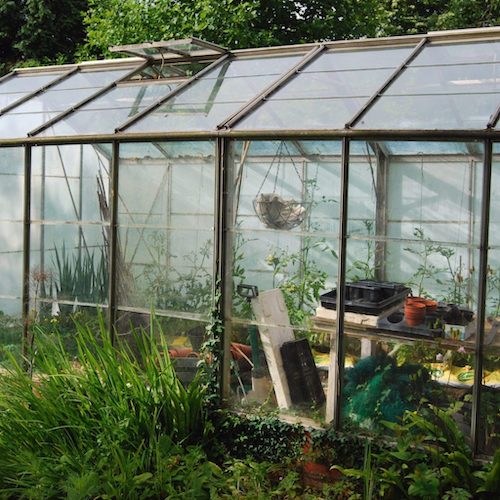
When the winter months come around, there are quite a few herbs that start to die back, such as tarragon and mint. One of the best things to do is to place your outdoor herbs in a place where they cannot be damaged by frost, drenched by rain or become very dry. Consider placing them in sheltered areas of the garden like along a wall out the way or place them in a cold frame if you have one. You can even relocate your herbs into an open-front shed.
If the weather becomes very cold and frosty, protect your containers from freezing and cracking by wrapping them in bubble polythene too. For other herbs like the classic basil leaf, they can only be grown if brought indoors into a warm, greenhouse, conservatory or sunny windowsill over the winter period.
Five Top Tips for Growing Herbs
- Most herbs can be grown outdoors from May onwards, but can be started as early as February in a heated greenhouse.
- The vast majority of herbs like free-draining compost, so make sure you have a mix that will support this, and ensure your pots have draining holes.
- Be cautious when growing mint, as it can quickly dominate a garden. Rather than grow in beds, simply pop it in a container.
- Herbs are fairly low maintenance, but do require deadheading when the growth has faded.
- You don’t have to use your herbs up straight away after harvesting them. Dry or freeze them to preserve them for later use!
We hope you find some new herbs to grow or have success with your existing herb garden. And whatever you are doing on plot, or indoors, make sure to share your gardening activities on our social media pages!
Check out our latest blog posts below!


love the info on herbs, found it very helpful as I’m about to re stock my collection of herbs, thank you very much
Rhona
Hi Rhona, thank you very much for your kind comment and we are so pleased that our guide to herbs has been helpful to you.
Best regards,
The Dobies Team
Great Article! Thank you for sharing this is very informative post, and looking forward to the latest one.
I am 91 and can garden within limits but kneeling is out now.What I need is a seat with arms so that having swept up endless debris from an enormous yew tree there are now several heaps of soil plus lots of twigs and foliage. Does anyone sell a chair with a secure frame on which I could sit and sift.
Agree great article and very useful thank you. I don’t use enough herbs. Will do now though and more in pots.